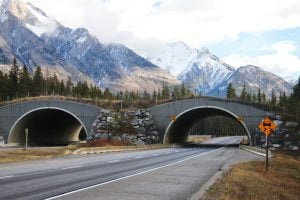If you’ve ever visited Gibraltar, a rock off the south of Spain that is United Kingdom territory, the most memorable thing about the place are the cheeky monkeys who have lived there for the past 300 years. Monkey Tales, The Gibraltar Macaque: A Living Legacy and a Perfect Nuisance by Larry Sawchuk and Lianne Tripp is the first academic book that looks in detail at Europe’s last remaining wild monkey population. The book — filled with images of macaques — explores the species’ historic relationship with the British military, and their ongoing interaction with the 30,000 people who live in Gibraltar. Sawchuk, a University of Toronto Scarborough medical anthropologist, spoke with Canadian Geographic about the intriguing new book.
Why did you decide to write a book?
It was really a labour of love. I’m a medical anthropologist by training and I first went to Gibraltar many years ago as a graduate student to study the health of the people. Then I realized I couldn’t study the people without also understanding the monkeys.
Where did the monkeys originally come from?
They are actually Barbary macaques originally from Morocco. Debate remains about when and how they arrived. By the time the British captured Gibraltar in 1704, the macaque population had already been established. They wouldn’t have survived if people didn’t care for them. Historically, there was no water supply in Gibraltar and the vegetation is sparse. The British governors put in policy an edict that you couldn’t shoot the monkeys. Today, they are a huge draw for tourists.
What did you find so intriguing about them?
I find their relationship with the residents of Gibraltar so interesting. This is the relatively new field of primatology — called ethno-primatology. Legend has it, as long as the macaques live in Gibraltar, the British will reign. During World War II, Prime Minister Winston Churchill shored up the population as it was dwindling and ordered more monkeys from Morocco. Their popularity helped lead to one of the earliest official forms of primate conservation in the Empire.
How large is the population today?
There are about 200 monkeys. They hang out in seven different groups and mostly stay near the top of the rock, though occasionally some monkeys venture into town.
What was the most surprising thing you found?
The monkeys were so important to the British authorities that their care was entrusted to the army. Not only was each monkey given a serial number but also a name. They had names like Elizabeth, for the future Queen, and Winston, for former British Prime Minister Winston Churchill. The people who cared for the monkeys did the same job for decades. One man, a keeper of the apes named Alfred Holmes, by the time he turned 40, he had spent nearly half his life caring for the monkeys. He developed insights into their habits and personalities, which the book explores. The animals live for 20 years, so there is a very special relationship there.
What do locals think of them?
They are a “perfect nuisance” for many Gibraltarians. They can be aggressive, steal food and damage property. But people put up with them and today, because of better management and control, it’s harder to find them on the street. Yet they are the only wild population of monkeys in Europe. I have been up at the top of the rock, and on either side of the walkway there were so many monkeys it was surreal.





